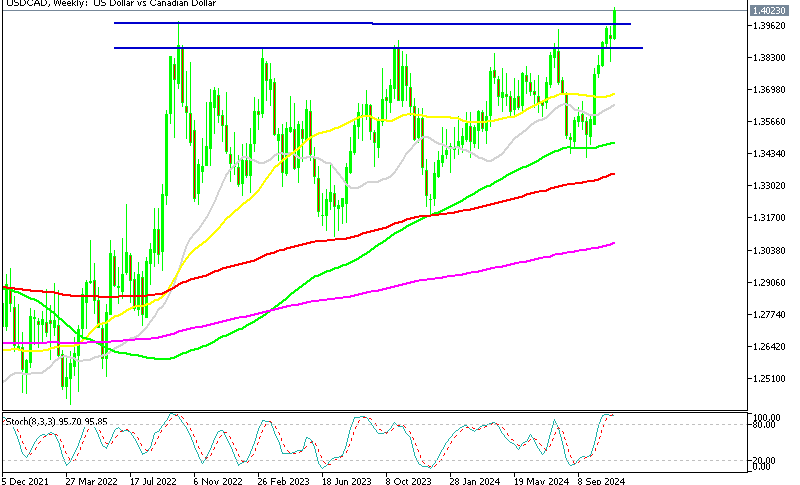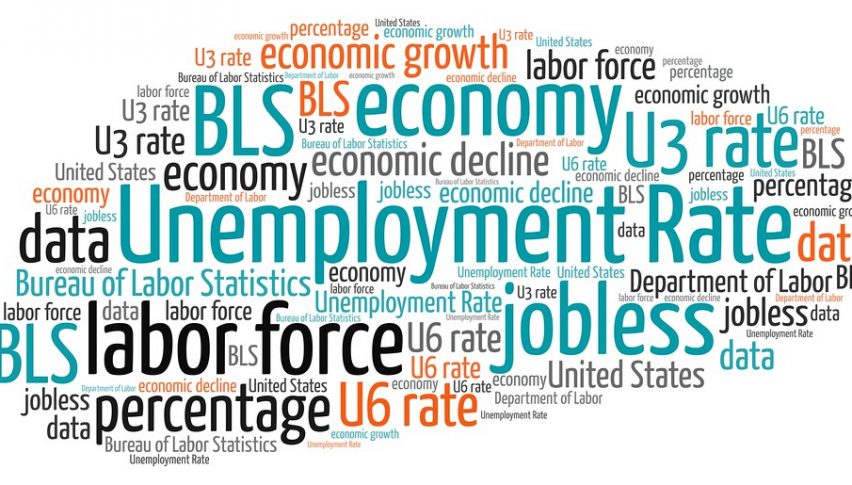EURUSD Decline Toward 1.05 Escalates As Risks for the EU Economy Increase
EURUSD broke below 1.06 yesterday after the jump in US inflation, resuming the bearish trend that started in early October, with the ECB and the Eurozone economic data not being of any help for the Euro.

The Euro (EUR) climbed nearly 6 cents earlier in the year, reaching a peak of 1.12. However, momentum has since reversed, and the pair is now heading lower, nearing the 1.05 level. Multiple failed attempts to hold above 1.12 in September signaled that buyers couldn’t sustain those gains. With renewed USD strength in October, the EUR began a steep decline. The recent Republican victory in the U.S. and a spike in October’s US CPI inflation, as noted yesterday, added fuel to this downtrend.
EUR/USD Chart Daily – 1.06 Should Turn Into Resistance Now
Following this, hawkish comments from FED members and mentions of higher neutral rates drove the EUR/USD sharply below 1.06. Yesterday, the EUR/USD reached a low around the 1.0550s, marking the first support area after hitting the year’s lowest levels for 2024. Further support levels lie at 1.05, with the next at 1.0450s, which was the 2023 low. This morning, the Eurozone’s Q3 GDP report and employment data were released, following downward adjustments to Germany’s economic outlook from yesterday.
Additional economic risks have emerged, especially given the outcome of the U.S. election. Germany’s economy ministry has warned that there may be rising concerns among German businesses and households. A major risk is Trump’s potential tariffs on German exports, which could also indirectly impact the EU market if tariffs on China lead to an oversupply in Europe as China seeks alternative markets. This presents another layer of economic threat for the EU to monitor closely.
Key Points on Eurozone Q3 GDP and September Industrial Production
Eurozone Q3 GDP (Second Estimate)
- Quarterly Growth:
- Q3 GDP growth was confirmed at +0.4% quarter-over-quarter, matching the preliminary estimate.
- This is a slight increase from Q2 GDP growth of +0.3%.
- Annual Growth:
- Annual GDP growth for Q3 was +0.9% year-over-year, consistent with the second estimate.
- Shows an improvement compared to Q2’s annual growth of +0.6%.
- Implication:
- Steady quarterly and annual GDP growth indicates a moderate, yet stable economic expansion in the Eurozone, reflecting resilience in demand and production.
Eurozone September Industrial Production
- Monthly Decline:
- Industrial production fell -2.0% in September, significantly below the expected -1.4% monthly decline.
- Indicates a sharper contraction in industrial output than anticipated.
- Prior +1.8%; revised to +1.5%
- Context:
- The drop in production suggests potential impacts from slowing global demand, energy cost pressures, and other supply chain disruptions affecting the industrial sector.
This data reinforces the picture of moderate growth in the Eurozone for Q3, keeping initial projections intact. However, with the anticipated impact of Trump tariffs likely affecting trade next year, these figures are somewhat backward-looking. The primary drivers of the decline in industrial production were reduced output in energy (-1.5%) and capital goods (-3.8%), with energy reversing its previous month’s increase of +3.8%. On the positive side, output rose for non-durable consumer goods (+1.6%) and durable consumer goods (+0.5%), helping to offset some of the monthly declines. Production for intermediate goods remained unchanged month-over-month.
















